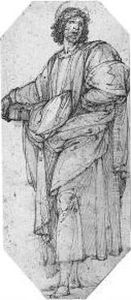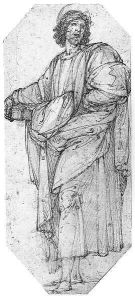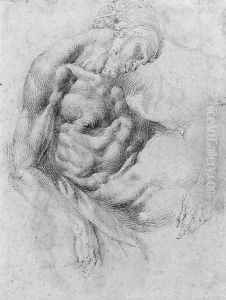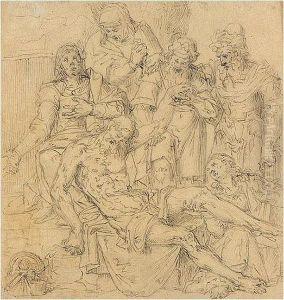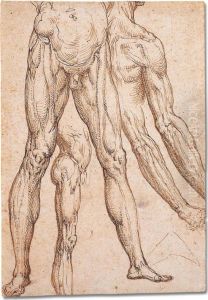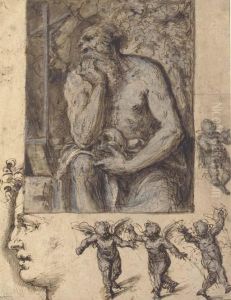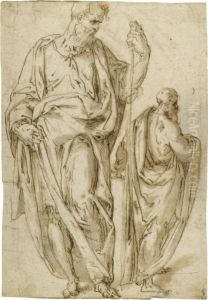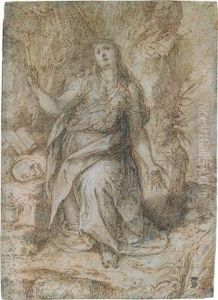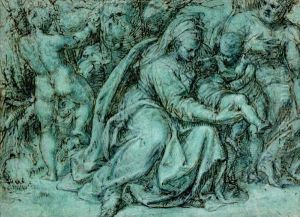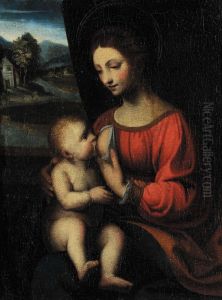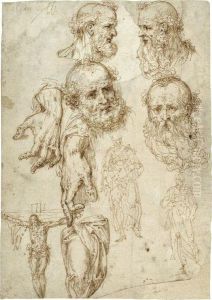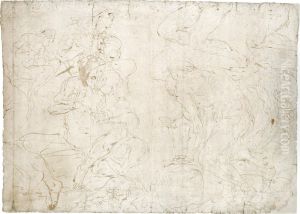Aurelio Luini Paintings
Aurelio Luini was an Italian painter, born in Milan in 1530, notable for his contributions to the Lombard painting style during the Renaissance period. He was the son of Bernardino Luini, a distinguished painter from whom Aurelio inherited his artistic talents. Throughout his life, Aurelio Luini was closely associated with the art scene in Milan and its surrounding regions, where he developed a style deeply influenced by his father's work but also distinguished by its unique characteristics.
Aurelio's career was marked by his contributions to fresco painting and his work on religious subjects, which were highly appreciated during his time. His art is characterized by graceful figures, soft colors, and a delicate use of light, showing the influence of Leonardo da Vinci, among others. Despite living in the shadow of his father's fame, Aurelio managed to carve out a significant place for himself in the art world through his dedication and skill.
One of his most notable works includes the frescoes in the church of San Maurizio al Monastero Maggiore in Milan, where his ability to depict narrative scenes with emotional depth and visual harmony is evident. He also worked on various projects in Lombardy, contributing to the decoration of chapels and churches with his paintings.
Throughout his career, Aurelio Luini demonstrated a strong commitment to the Milanese artistic tradition, while also incorporating elements from other Italian Renaissance centers. His works played a significant role in the development of late Renaissance art in Lombardy, making him an important figure in the region's cultural history.
Aurelio Luini passed away in 1593, leaving behind a legacy that has continued to be appreciated by art historians and enthusiasts alike. His contributions to Italian Renaissance art, particularly in the realm of religious painting, remain a testament to his talent and dedication to his craft.
